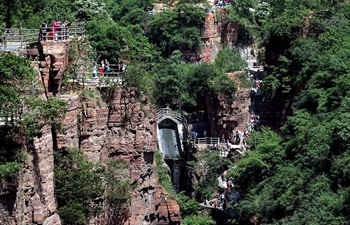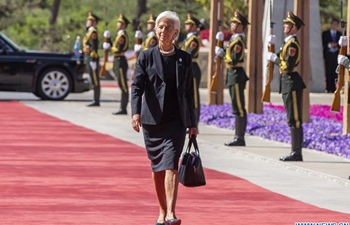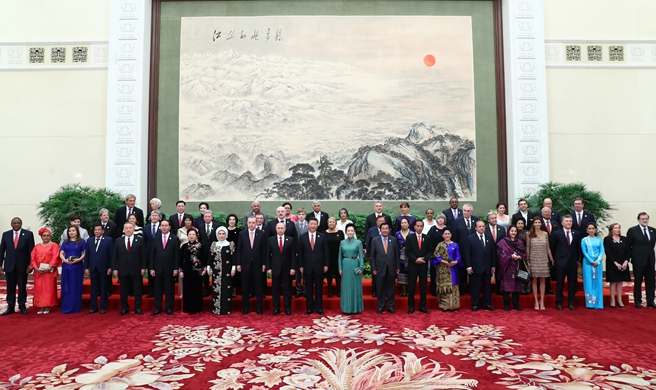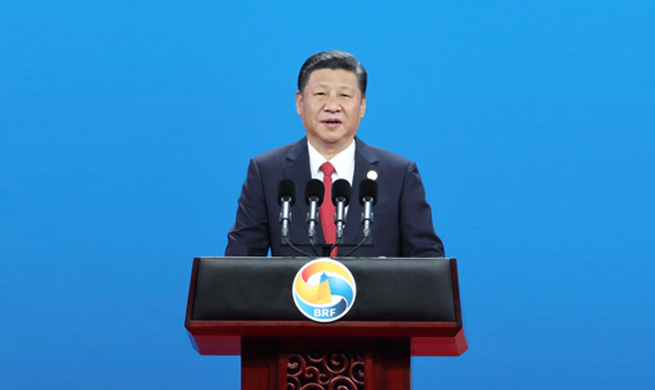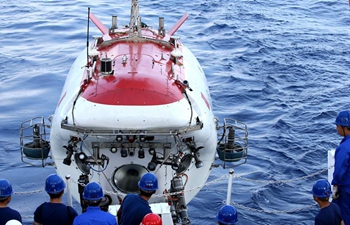TOKYO, May 15 (Xinhua) -- Okinawa Governor Takeshi Onaga on the occasion of the 45th anniversary of Okinawa's reversion to Japan from U.S. military rule on Monday described the continued presence of U.S. military bases on the island as "the biggest impediment to development."
In a statement to mark the occasion, Onaga said that even after the reversion "Okinawa continues to suffer from incidents and accidents linked to U.S. bases, environmental and other concerns," adding that the bases are the "biggest impediment to development" in his prefecture.
Local people in Okinawa have been hoping to see a significant reduction in their base-hosting burdens since the reversion, but the reality of the situation has been somewhat different.
In May 1972, Okinawa was ostensibly returned to Japanese control, with the area to be used for U.S. military facilities covering just less than 30,000 hectares.
And while as of January this year, the area is now less than 19,000 hectares, the pace of reduction compared to mainland Japan is comparatively slow.
Okinawa, Japan's southernmost prefecture which accounts for just 0.6 percent of the total county's land, accommodates more than 70 percent of the total acreage of Japan-based U.S. military facilities.
The disproportionate amount of military-related crimes, accidents and instances of pollution on the tiny island has also led to a steady rise in anti-U.S. military sentiment in Okinawa.
Other sources of resentment have been a joint pact between Japan's central government and the United States to relocate the U.S. Marine Corps Air Station Futenma within Okinawa.
Onaga, a staunch opponent to the base being relocated to the coastal Henoko region on the island, said, "I will devote myself to tackling matters such as the bases issue to build a peaceful and prosperous Okinawa for future generations."
Onaga who has sued and been counter-sued by the central government over the long-running issue, has said he will do everything in his power to see the base relocated off the island completely rather than to the coastal Henoko area in Nago.
The Okinawan chapter of Japan's Defense Ministry last month, however, started constructing seawalls to surround an area in a coastal region on the island for the relocation the base amid uproar from local citizens.
The Okinawa Defense Bureau launched full-scale operations to build seawalls around a site to be filled with sand and earth that will prevent sediment spreading.
The Defense Bureau's new phase of construction follows maritime reclamation work in February involving dropping concrete blocks into the sea off the coast of Henoko from vessels equipped with large cranes.
The vessels dropped 220 blocks, each weighing 14 tons to form barriers in four areas in the sea where the seawalls will be built.
The construction work has drawn staunch criticism from local residents and officials in Okinawa. Protests to the reclamation work have been frequent.
In February, Onaga visited the United States in person to convey his message of resistance to the relocation move to U.S. President Donald Trump.
Onaga may now look to block the central government's reclamation work by refusing to issue a permit necessary for coral reefs to be moved in the area in which land is being reclaimed from, informed sources have said.
The Okinawa governor has floated numerous other ways he may try to block the central government's plans and protect the lives of Okinawans, including not approving any changes in the construction design of the new base, which involves a V-shaped runway being build on the reclaimed land.
The fact that the waters that the central government is planning to reclaim for construction of the base are home to the endangered dugong, which is a large marine mammal and cousin of the manatee, has also been mentioned as additional armament for Okinawan officials to use against the central government to try and block or impede its base-building plans.
The central government, however, despite the protracted standoff with Onaga, local officials and citizens, has maintained its stance that the relocation plan remains the only way forward in line with a pact made with the U.S. under its broader security alliance.
Nevertheless, Onaga said Monday he will devote himself to solving the U.S. base issue on behalf of the current and future generations that will continue to bear an undue burden of hosting U.S. military forces if the situation remains unchecked.
On Sunday, civic groups and labor unions demonstrated in Okinawa to mark reversion day and called for a stop to the relocation of the Futenma base.
The marches began on Friday and concluded on Sunday with a rally in Henoko, with organizers saying more than 2,000 people took part.
Nago City Mayor Susumu Inamine instructed the crowd to continue to fight for democracy and for Okinawa to come under its own rule. He also vowed to the crowd that he would not allow the replacement facility to be built in Henoko.
Protestors were seen on the streets wearing headbands and carrying placards reading: "No U.S. military bases in Okinawa!" and "U.S. military get out of Okinawa!"
One protestor in her twenties said she feels scared by the presence of so many U.S. military personnel, particularly when she reads about their involvement in incidents of rape and assault.
She said she didn't want her young sister to grow up knowing the same fear.
A man in his sixties said that living near the town of Kadena, near Kadena Air Base, had become increasingly difficult as he'd got older, due to the unbearable levels of noise from the jets taking off, landing and flying overhead.





